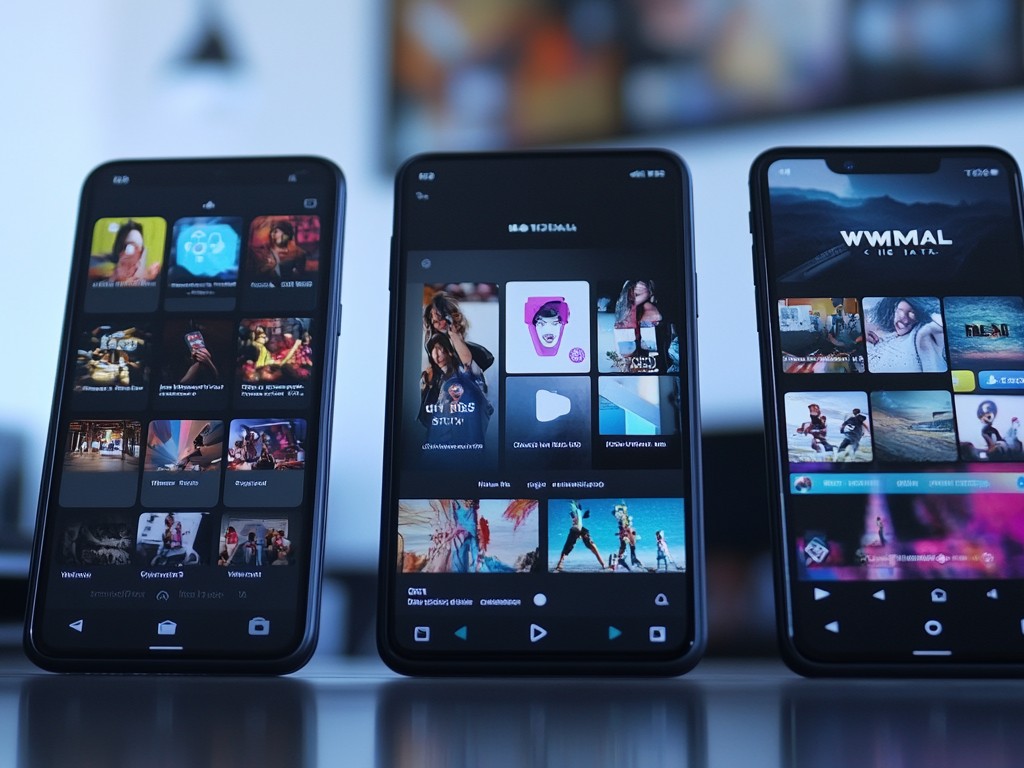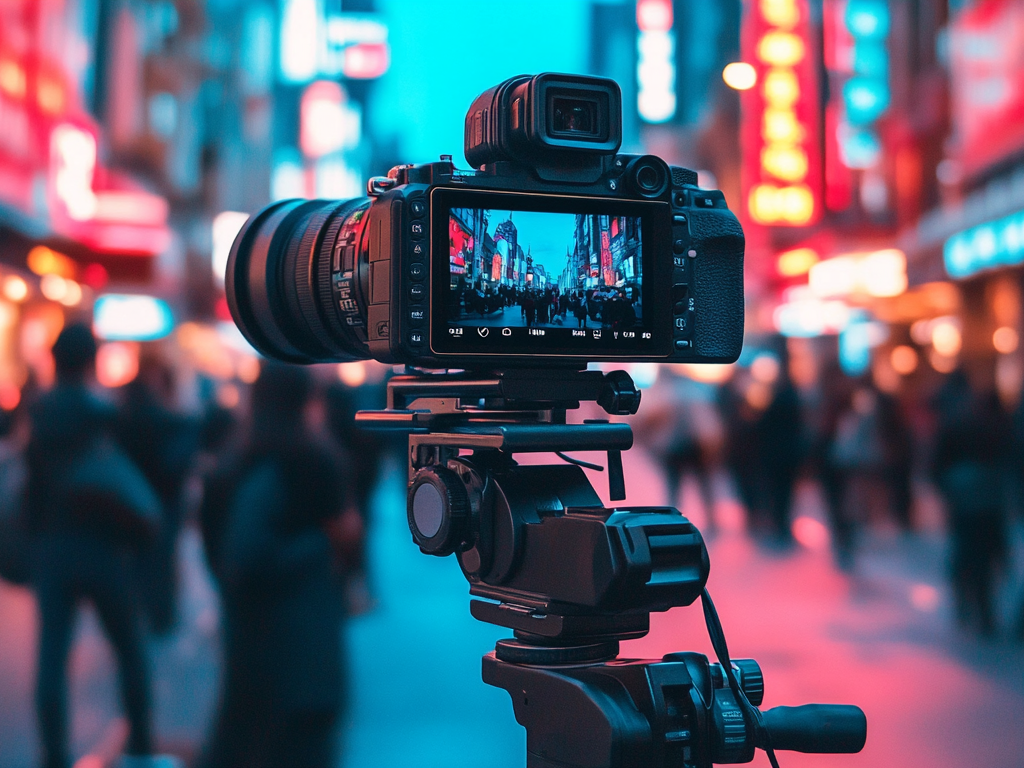
Short-form video has transformed the digital marketing landscape, becoming one of the most effective ways to capture audience attention and drive engagement. Platforms like TikTok, Instagram Reels, and YouTube Shorts have fueled this shift, prioritizing quick, visually dynamic content designed for on-the-go consumption. As audiences demand faster, more digestible content, brands are rethinking their marketing strategies to stay relevant in a world where a few seconds can determine success or failure.
the dominance of short-form video in digital marketing
The global rise of short-form video has been nothing short of phenomenal. What started as a trend on TikTok has now become a marketing necessity across multiple platforms. The rapid adoption of this format is driven by three key factors:
- consumer behavior shifts – people prefer quick, engaging content that fits into their fast-paced lives.
- social media algorithms – platforms prioritize short videos to maximize engagement and time spent on their apps.
- high return on investment (ROI) – businesses are seeing increased brand awareness and conversions through short-form content.
According to a HubSpot 2024 marketing report, 92% of video marketers say short-form videos provide the highest ROI, outperforming longer content formats. Another study by Wyzowl found that 73% of consumers prefer watching a short video to learn about a product instead of reading an article or looking at static images.
Platforms are adapting to these preferences, continuously updating their features to keep users engaged. The battle between TikTok, Instagram Reels, and YouTube Shorts highlights how critical short-form video has become in modern marketing.
tiktok, instagram reels, and youtube shorts: key differences and strengths
While all three platforms revolve around short-form videos, they each have unique features that cater to different types of content and audience behaviors.
tiktok: the leader in viral content
- algorithm-driven virality – content is pushed based on engagement, not follower count.
- trends and challenges – users actively participate in viral challenges, making it ideal for brand collaborations.
- fast content discovery – videos appear in the for you page, creating opportunities for organic reach.
instagram reels: integrated with e-commerce
- connected to instagram shopping, allowing brands to link products directly in videos.
- engagement-focused algorithm – rewards users for interacting with posts and stories.
- strong influencer presence – brands can leverage existing communities through influencer marketing.
youtube shorts: backed by search visibility
- benefits from youtube’s search engine, offering a longer content lifespan.
- ideal for educational and explainer content, leveraging youtube’s authority in tutorials.
- monetization opportunities, including revenue-sharing options for content creators.
Each platform serves a different purpose, making a cross-platform strategy essential for brands looking to maximize their short-form video impact.
why short-form videos are more engaging and effective in 2025
The average attention span of internet users has dropped to 8.25 seconds (Microsoft study, 2023). This means that marketers have less time than ever to make an impression. Short-form videos excel in capturing attention quickly, keeping users engaged through visual storytelling, music, and interactive elements.
key engagement statistics
- videos under 30 seconds have a 60% higher completion rate than longer videos (Sprout Social, 2024).
- users are twice as likely to share short-form videos compared to other types of content (HubSpot, 2024).
- 90% of tiktok views come from non-followers, proving its potential for organic reach (TikTok Business, 2024).
- brands using reels see a 22% boost in engagement compared to static posts (Meta, 2024).
Beyond engagement, short-form videos also drive action. Meta reports that 47% of short-form video ads lead directly to a purchase, making them one of the most effective tools for conversions.
the key question: how can brands leverage short-form video for maximum impact?
Success in short-form video marketing requires more than just uploading content. Brands need to focus on strategic storytelling, audience engagement, and data-driven optimization.
best practices for brands
- hook viewers within the first three seconds – attention-grabbing intros determine whether people keep watching.
- use trending sounds and challenges – platforms favor content that aligns with viral trends.
- optimize for mobile and captions – 85% of videos are watched without sound. Subtitles improve accessibility.
- include a clear call-to-action (CTA) – encourage users to like, comment, follow, or click a link.
- engage with the audience – responding to comments and using interactive features like polls increases visibility.
Brands that master these strategies can build stronger connections with their audiences, increase brand visibility, and improve conversions in the competitive digital landscape.

the popularity of short-form videos
In recent years, short-form videos have revolutionized the digital landscape, becoming a dominant force in content consumption and marketing strategies. Platforms such as TikTok, Instagram Reels, and YouTube Shorts have capitalized on this trend, offering users quick, engaging, and easily digestible content. This section delves into the statistics and trends that underscore the rise of short-form videos, explores the reasons behind their widespread appeal, and examines why brands are increasingly investing in this format.
statistics and trends
The meteoric rise of short-form video platforms is evident through compelling statistics:
- TikTok: As of January 2024, TikTok boasts approximately 1.562 billion monthly active users worldwide, making it the fifth-largest social media platform globally. fr.wikipedia.org
- YouTube Shorts: YouTube Shorts has experienced significant growth, with daily views surpassing 70 billion.
- Instagram Reels: While specific statistics for Instagram Reels’ contribution to overall engagement are not publicly disclosed, Instagram continues to be a major platform with 2 billion monthly active users as of April 2024.
These figures highlight the substantial user bases and engagement levels associated with short-form video platforms.
why users love short videos
Several factors contribute to the widespread user preference for short-form videos:
- quick and engaging: Short videos cater to modern users’ limited attention spans, delivering content that is concise yet impactful.
- mobile-friendly: Designed for vertical viewing, these videos are optimized for smartphones, aligning with the predominant mode of content consumption.
- bite-sized content: The brevity of short-form videos allows users to consume content rapidly, fitting seamlessly into busy lifestyles.
- AI-driven personalized feeds: Advanced algorithms curate content tailored to individual preferences, enhancing discoverability and user satisfaction.
These attributes make short-form videos particularly appealing in today’s fast-paced digital environment.
why brands are investing in short videos
Brands are increasingly recognizing the value of short-form videos in their marketing strategies due to several compelling reasons:
- higher engagement rates: Short videos often achieve higher engagement compared to traditional video ads, capturing attention more effectively.
- better ROI: The cost-effectiveness and viral potential of short-form content can lead to a more favorable return on investment.
- enhanced visibility: Algorithm-driven platforms prioritize short videos, increasing the likelihood of content reaching a broader audience.
By leveraging short-form videos, brands can connect with audiences more authentically and dynamically, driving brand awareness and conversions.

platform breakdown: tiktok vs. instagram reels vs. youtube shorts
In the rapidly evolving landscape of digital marketing, short-form video platforms have emerged as pivotal channels for brand engagement and audience interaction. Among these, TikTok, Instagram Reels, and YouTube Shorts stand out as dominant players, each offering unique features and opportunities for marketers. Understanding the distinct characteristics of these platforms is essential for crafting effective marketing strategies.
TikTok: The Trendsetter
Launched in 2016, TikTok has rapidly become a global phenomenon, boasting over 1 billion monthly active users as of 2024. Its algorithm is renowned for prioritizing content based on engagement rather than follower count, enabling even new users to achieve viral status. Key features include:
- Interactive Elements: TikTok offers tools such as duets, stitches, and challenges, fostering a highly interactive user experience.
- Algorithmic Virality: The platform’s “For You Page” curates content tailored to individual user preferences, enhancing content discoverability.
- Brand Opportunities: TikTok’s format is ideal for brand awareness campaigns and viral marketing, allowing brands to engage with trends and reach a broad audience.
Instagram Reels: The Social Commerce Hub
Instagram introduced Reels in 2020 as a direct competitor to TikTok, integrating short-form video content into its existing ecosystem. With over 2 billion monthly active users on Instagram, Reels has become a significant feature for content creators and brands. Notable aspects include:nypost.com
- E-commerce Integration: Reels seamlessly connects with Instagram Shopping, enabling brands to tag products directly in videos, facilitating immediate purchases.
- Influencer Collaboration: The platform’s established influencer community provides ample opportunities for partnerships and sponsored content.
- Engagement Algorithms: Instagram’s algorithm favors content that garners quick engagement, such as likes, comments, and shares, boosting the visibility of Reels.
YouTube Shorts: The SEO-Powered Contender
YouTube Shorts, launched globally in 2021, leverages YouTube’s extensive user base and search capabilities to offer a unique short-form video experience. As of 2024, YouTube Shorts has surpassed 70 billion daily views, reflecting its rapid growth. Key features include:
- Search Visibility: Shorts benefit from YouTube’s robust search engine, allowing content to have a longer lifespan and discoverability.
- Monetization Options: Creators can utilize YouTube’s existing monetization tools, including ad revenue sharing and channel memberships.
- Content Suitability: Shorts are ideal for educational content, tutorials, and storytelling, aligning with YouTube’s reputation for informative videos.

The Psychology Behind Short Video Success
Short-form videos have revolutionized digital marketing, captivating audiences worldwide. Their success is deeply rooted in human psychology, leveraging factors such as attention spans, content looping, auditory elements, and emotional engagement.
Short Attention Spans
In today’s fast-paced digital environment, attention spans are notably brief. A study highlighted that the average attention span of British adults is approximately 17 minutes and 10 seconds, with various tasks experiencing even shorter durations. This decline has made quick, impactful content more appealing, as it aligns with the audience’s limited capacity for prolonged focus.
Looping Videos and Repeat Engagement
Platforms like TikTok and Instagram Reels utilize looping features, where videos automatically replay, encouraging repeated viewing. This design taps into the Zeigarnik Effect—a psychological phenomenon where people remember uncompleted or interrupted tasks better than completed ones—prompting viewers to rewatch content to grasp its entirety. Such repetition enhances memory retention and increases overall engagement.
Sound and Trends Matter
Auditory elements, including popular music tracks, challenges, and memes, play a crucial role in the virality of short videos. Incorporating trending sounds not only makes content more relatable but also boosts its discoverability through platform algorithms that favor popular audio. This strategy creates a sense of community and participation among users, as they engage with familiar and trending auditory cues.
Emotional Triggers
Effective short videos often evoke strong emotions—be it humor, nostalgia, or inspiration. Content that resonates emotionally is more likely to be shared, as individuals tend to pass along experiences that elicit significant feelings. This emotional engagement fosters a deeper connection between the viewer and the content, enhancing the likelihood of virality.

how brands can master short-form video marketing
In the rapidly evolving digital landscape, short-form video platforms like TikTok, Instagram Reels, and YouTube Shorts have become pivotal in shaping consumer behavior and brand engagement. To effectively harness the power of these platforms, brands must adopt tailored strategies that resonate with their target audiences.
content strategies that work
- storytelling in 15-60 seconds: Capturing audience attention swiftly is crucial. Brands should craft concise narratives that deliver impactful messages within the limited timeframe.
- user-generated content (UGC) and influencer collaborations: Partnering with influencers and encouraging UGC fosters trust and enhances engagement. For instance, brands like e.l.f. Cosmetics have successfully utilized original songs and influencer partnerships to create viral TikTok campaigns.
- behind-the-scenes and authenticity: Showcasing raw, unfiltered content humanizes brands, making them more relatable. This approach aligns with the preferences of younger audiences who value authenticity.
- educational and how-to videos: Positioning brands as thought leaders through informative content adds value to the viewer, fostering loyalty and trust.
best practices for each platform
- TikTok: Engaging in trending challenges, utilizing native editing tools, and maintaining a frequent posting schedule can significantly boost visibility and engagement.
- Instagram Reels: Leveraging interactive features like stickers, incorporating relevant hashtags, and utilizing Reels Ads can enhance reach and engagement.
- YouTube Shorts: Optimizing content for search engine visibility, crafting compelling hooks, and including subtitles can improve accessibility and discoverability.
monetization and advertising
- TikTok Ads and Spark Ads: Investing in paid promotions can amplify reach and engagement, offering brands a platform to showcase their products creatively.
- Instagram Reels Ads and Shopping Integration: Integrating shopping features within Reels allows for a seamless transition from content consumption to purchase, enhancing conversion rates.
- YouTube Shorts Fund and Ads: Participating in YouTube’s monetization programs enables brands to generate revenue while reaching a broader audience through short-form content.

future trends: what’s next for short videos in marketing?
The landscape of short-form video marketing is continually evolving, with emerging technologies and consumer behaviors shaping its trajectory. Key trends poised to redefine this space include AI-generated video content, shoppable video experiences, live and interactive shorts, and the integration of virtual and augmented reality.
AI-Generated Video Content
Artificial intelligence is revolutionizing video production by automating content creation, enabling brands to produce personalized and engaging videos at scale. AI tools can generate scripts, edit footage, and optimize sound, reducing the time and resources traditionally required for video production. For instance, AI-driven platforms can analyze vast datasets to craft videos tailored to specific audience preferences, enhancing relevance and engagement.
Shoppable Video Experiences
Shoppable videos are transforming the e-commerce landscape by seamlessly integrating product discovery with purchasing. These interactive videos allow viewers to click on featured products and complete transactions without leaving the video interface. This fusion of content and commerce streamlines the customer journey, catering to consumers’ desire for convenience and immediacy. Brands leveraging shoppable videos have observed increased engagement and conversion rates, making it a pivotal strategy in modern marketing. firework.com+1Orbitvu+1
Live and Interactive Shorts
The rise of live streaming has introduced real-time engagement opportunities within short-form videos. Platforms now offer features that enable brands to host live sessions, interact with viewers through comments and reactions, and receive immediate feedback. This immediacy fosters a sense of community and authenticity, enhancing brand loyalty. Interactive elements such as polls, quizzes, and live Q&A sessions further enrich the viewer experience, making content more engaging and participatory.
VR and AR in Short Videos
Virtual and augmented reality technologies are ushering in immersive experiences within short-form videos. AR filters and VR environments enable brands to create interactive and engaging content that captivates audiences. For example, AR can allow users to visualize products in their own space, enhancing the online shopping experience. As these technologies become more accessible, their integration into short videos is expected to become a standard practice, offering innovative ways to engage consumers.

conclusion & key takeaways
In the contemporary digital marketing landscape, short-form videos have emerged as indispensable tools for engaging audiences and driving brand narratives. Platforms such as TikTok, Instagram Reels, and YouTube Shorts have revolutionized content consumption, offering unique advantages that brands must strategically leverage.
The Imperative of Short Videos in Modern Digital Marketing
The shift towards short-form video content aligns with evolving consumer behaviors, particularly diminishing attention spans. Recent studies indicate that the average human attention span has decreased to approximately eight seconds, underscoring the necessity for quick, impactful content. Platforms like TikTok, Instagram Reels, and YouTube Shorts have capitalized on this trend, offering formats that cater to rapid consumption and immediate engagement. These platforms have experienced exponential growth; for instance, TikTok surpassed 1 billion monthly active users as of 2024, reflecting the escalating demand for short-form content.
Tailoring Strategies to Platform-Specific Advantages
Each short-form video platform presents distinct features and audience dynamics, necessitating tailored marketing strategies:
- TikTok: Renowned for its algorithm that amplifies content based on engagement rather than follower count, TikTok offers brands the opportunity to achieve rapid virality. Participating in trending challenges, utilizing native editing tools, and maintaining an authentic tone are effective strategies on this platform.
- Instagram Reels: Integrated within the broader Instagram ecosystem, Reels benefits from features like Shopping integration and a well-established influencer community. Brands can leverage these tools for product showcases and collaborations, enhancing both reach and conversion rates.
- YouTube Shorts: Leveraging YouTube’s robust search engine capabilities, Shorts provides extended discoverability. Brands focusing on educational content, tutorials, or storytelling can benefit from the platform’s SEO advantages and monetization options.
Emphasizing Creativity, Authenticity, and Engagement
The success of short-form video marketing hinges on three core principles:
- Creativity: Innovative and original content captures attention and differentiates brands in a saturated market.
- Authenticity: Consumers gravitate towards genuine content that resonates with their experiences and values. Transparent storytelling fosters trust and loyalty.
- Engagement: Interactive elements such as polls, Q&A sessions, and direct responses to comments enhance user involvement, fostering a community around the brand.
The Future: Short, Interactive, and Mobile-First
The trajectory of digital marketing is unmistakably oriented towards short-form, interactive, and mobile-first content. As mobile device usage continues to dominate, brands must optimize content for on-the-go consumption. Interactive features that encourage participation will become increasingly vital in capturing and retaining audience attention. Embracing these trends will be crucial for brands aiming to maintain relevance and drive engagement in an ever-evolving digital landscape.
unlock the power of short-form video marketing
Short videos are more than just a trend—they are the future of digital engagement. By leveraging psychological triggers like attention-grabbing visuals, looping content, trending sounds, and emotional storytelling, brands can create highly engaging and shareable videos that drive real results.
Ready to take your digital marketing strategy to the next level? Start creating short-form content that captivates your audience and boosts brand visibility.
stay ahead of the competition—embrace short videos today!
For more insights on digital marketing trends, visit WWM DIGITAL and explore the latest strategies shaping the industry.

